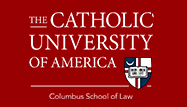Abstract
Money market funds have proven to be a highly successful financial product, both in the United States and Europe. These funds have offered investors a competitive, short-term market rate of return, while providing diversification of investments and daily liquidity. Notwithstanding (or, perhaps, in spite of) money market funds’ popularity beginning in the late 1970s and early 1980s, money market funds have been subject to a complex set of regulations and intense focus by global regulators, particularly those in the United States and European Union. This regulatory scrutiny was particularly acute following the 2008 financial crisis and, more recently, after the market volatility resulting from the COVID-19 pandemic in March 2020. Indeed, in February 2010, July 2014 and July 2023, the US Securities and Exchange Commission, the primary regulator of US money market funds, adopted significant amendments to the rules that govern US money market funds. Likewise, the EU Commission and Council adopted reforms to the regulation of EU money market funds in 2017 and is in the process of considering and potentially adopting new reforms. These efforts, while similarly aligned to seek to enhance the resiliency of money market funds in response to perceived weaknesses stemming from past crises, have resulted in key similarities and differences between US and EU money market fund regulations. This article compares and contrasts money market fund regulations in the United States and European Union.
Recommended Citation
Stephen T. Cohen & Austin G. McComb,
Money Market Funds: Comparison of Regulations in the United States and European Union,
74
Cath. U. L. Rev.
189
(2025).
Available at:
https://scholarship.law.edu/lawreview/vol74/iss2/5


